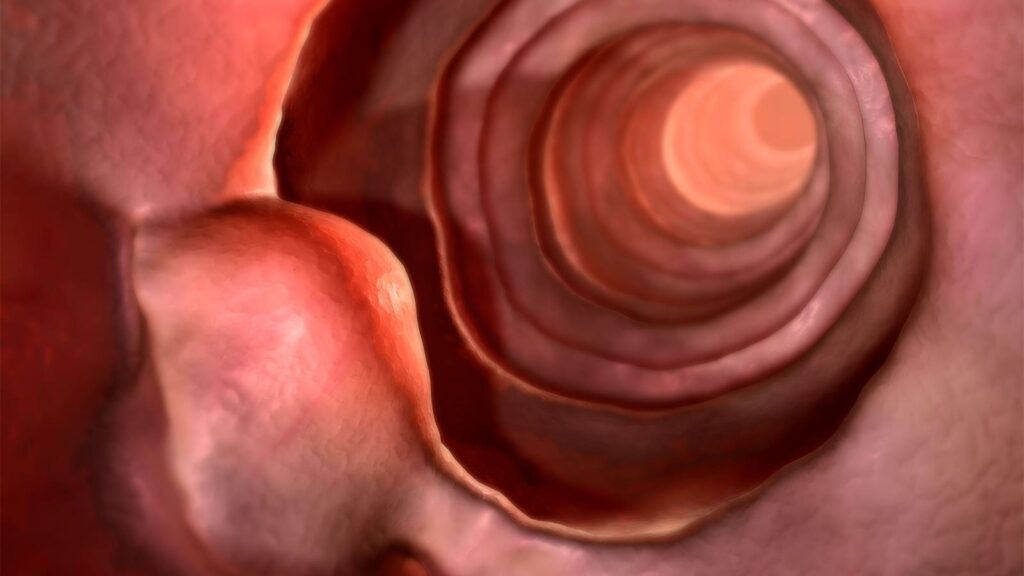Using endoscopic ultrasonography-guided gastroenterostomy (EUS-GE) led to better outcomes in the palliation of malignant gastric outlet obstruction compared with conventional stenting of the duodenum, an international randomized trial showed.
The primary outcome of the need for reintervention by 6 months occurred in 4% of patients in the EUS-GE group compared with 29% of those in the duodenal stent group (risk ratio 0.15, 95% CI 0.04-0.61, P=0.0020), reported Anthony Yuen Bun Teoh, FRCSEd(Gen), of the Chinese University of Hong Kong, and colleagues.
Stent patency was also longer with EUS-GE compared with duodenal stenting (HR 0.13, 95% CI 0.08-0.22, log-rank P<0.0001), and the 1-month gastric outlet obstructive score (GOOS) was significantly better (mean 2.41 vs 1.91, P=0.012), they noted in the Lancet Gastroenterology and Hepatology.
There were 10 deaths in the EUS-GE group versus six in the duodenal stent group within 30 days (P=0.286). Additionally, there were no statistically significant differences in technical success, clinical success, or quality-of-life scores at 1 month.
“In patients with malignant gastric outlet obstruction with reasonable life expectancy, EUS-GE should be used preferentially over duodenal stenting when expertise is available,” Teoh and team wrote. “Future studies should also address the cost effectiveness of EUS-GE as compared with duodenal stenting.”
However, they noted that EUS-GE was done using the EPASS device, which is not widely available. EUS-GE is also a complex procedure requiring technology that duodenal stenting does not. It also requires supervised training and expertise on the part of the endoscopists, with at least 25 procedures to achieve proficiency and 40 for mastery, they added.
In an editorial accompanying the study, Selma Lekkerkerker, PhD, and Rogier Voermans, PhD, of Amsterdam University Medical Center, wrote that the study “represents an important step away from the use of the duodenal stent and towards a promising future for EUS-GE.”
But they, too, pointed out that the participating centers were all expert centers for therapeutic EUS. “The results should therefore be confirmed outside of international expert centers before EUS-GE can be implemented more widely,” they noted.
This trial was conducted at seven sites in Hong Kong, Belgium, Brazil, India, Italy, and Spain. From December 2020 through February 2022, 97 patients (46 men and 51 women) with malignant gastric outlet obstruction due to unresectable primary gastroduodenal or pancreatobiliary malignancies were enrolled; 48 were randomly assigned to the EUS-GE group and 49 to the duodenal stent group after cannulation of the obstruction with a guidewire.
Mean age was 69.5, and all patients had a GOOS score of 0 (unable to consume solid food or liquids by mouth), an Eastern Cooperative Oncology Group performance status score of 3 or lower, and a life expectancy of more than 1 month.
While the procedure being performed could not be masked from the endoscopists, they were instructed not to indicate which was used in the procedure notes.
The primary outcome was 6-month reintervention rate, defined as the percentage of patients requiring additional endoscopic intervention due to stent dysfunction (restenosis of the stent due to tumor ingrowth, tumor overgrowth, or food residue; stent migration; or stent fracture) within 6 months.
Adverse events occurred in 23% of patients in the EUS-GE group and 24% of those in the duodenal stent group within 30 days. Three cases of pneumonia (two in the EUS-GE group and one in the duodenal stent group) were considered to be related to the procedure.
Disclosures
This study was funded by the Research Grants Council (Hong Kong Special Administrative Region, China) and Sociedad Española de Endoscopia Digestiva.
Teoh reported consulting for Boston Scientific, Cook Medical, Taewoong, Microtech, and M.I. Tech Medical Corporations. Co-authors reported relationships with Boston Scientific, Olympus, BCM, Omega Medical Imaging, Apollo Endosurgery, Ambu, Medtronic, M.I. Tech, and Tigen Pharma.
Lekkerkerker had no conflicts of interest. Voermans reported receiving research grants from Boston Scientific and Prion Medical, consultancy for Boston Scientific and Cook Medical, and speaker’s fees from Mylan and Zambon.
Primary Source
The Lancet Gastroenterology and Hepatology
Source Reference: Teoh AYB, et al “Endoscopic ultrasonography-guided gastroenterostomy versus uncovered duodenal metal stenting for unresectable malignant gastric outlet obstruction (DRA-GOO): a multicentre randomised controlled trial” Lancet Gastroenterol Hepatol 2023; DOI: 10.1016/S2468-1253(23)00242-X.
Secondary Source
The Lancet Gastroenterology and Hepatology
Source Reference: Lekkerkerker SJ, Voermans RP “Endoscopic ultrasonography-guided gastroenterostomy: the end of the duodenal stent?” Lancet Gastroenterol Hepatol 2023; DOI: 10.1016/S2468-1253(23)00311-4.
Please enable JavaScript to view the

